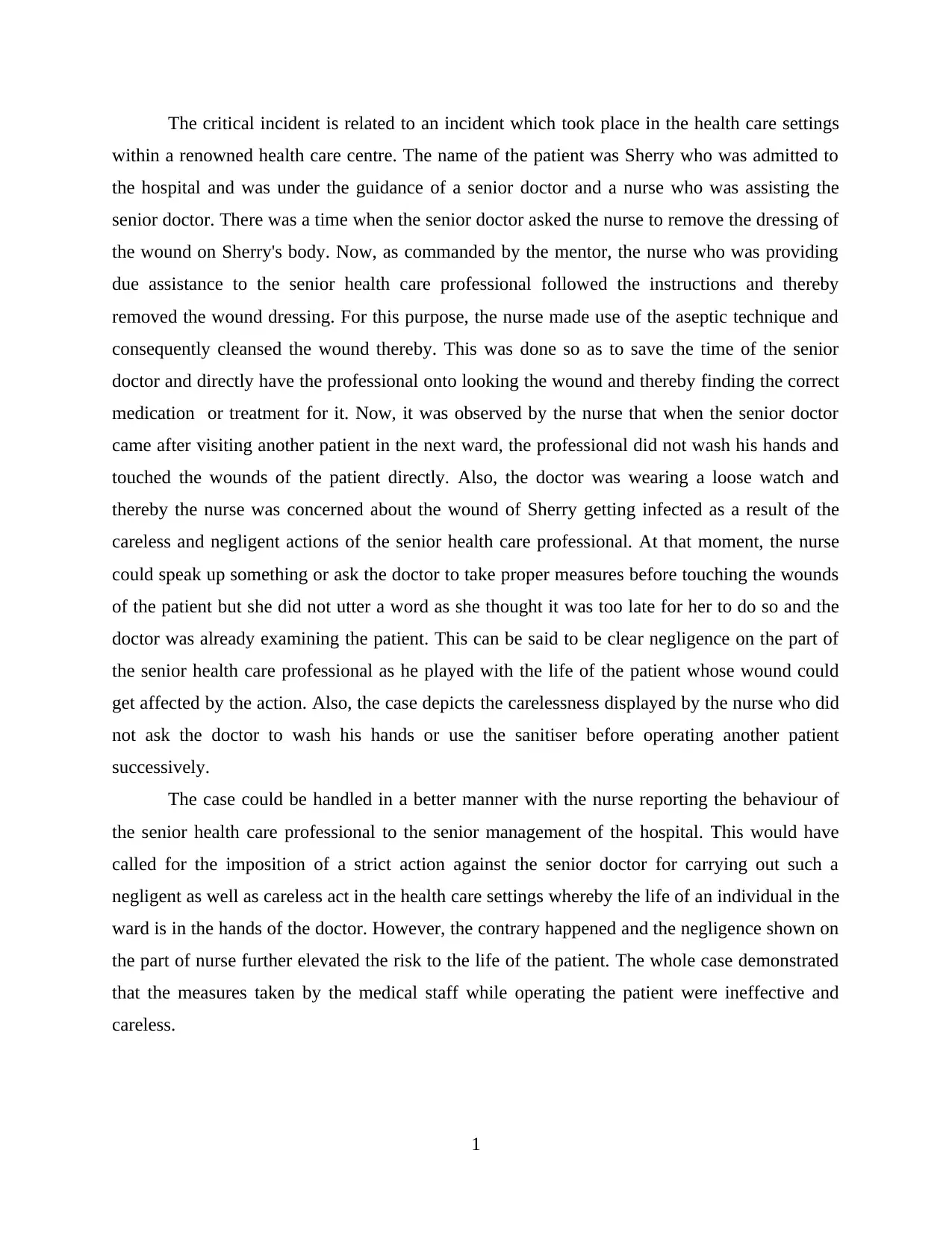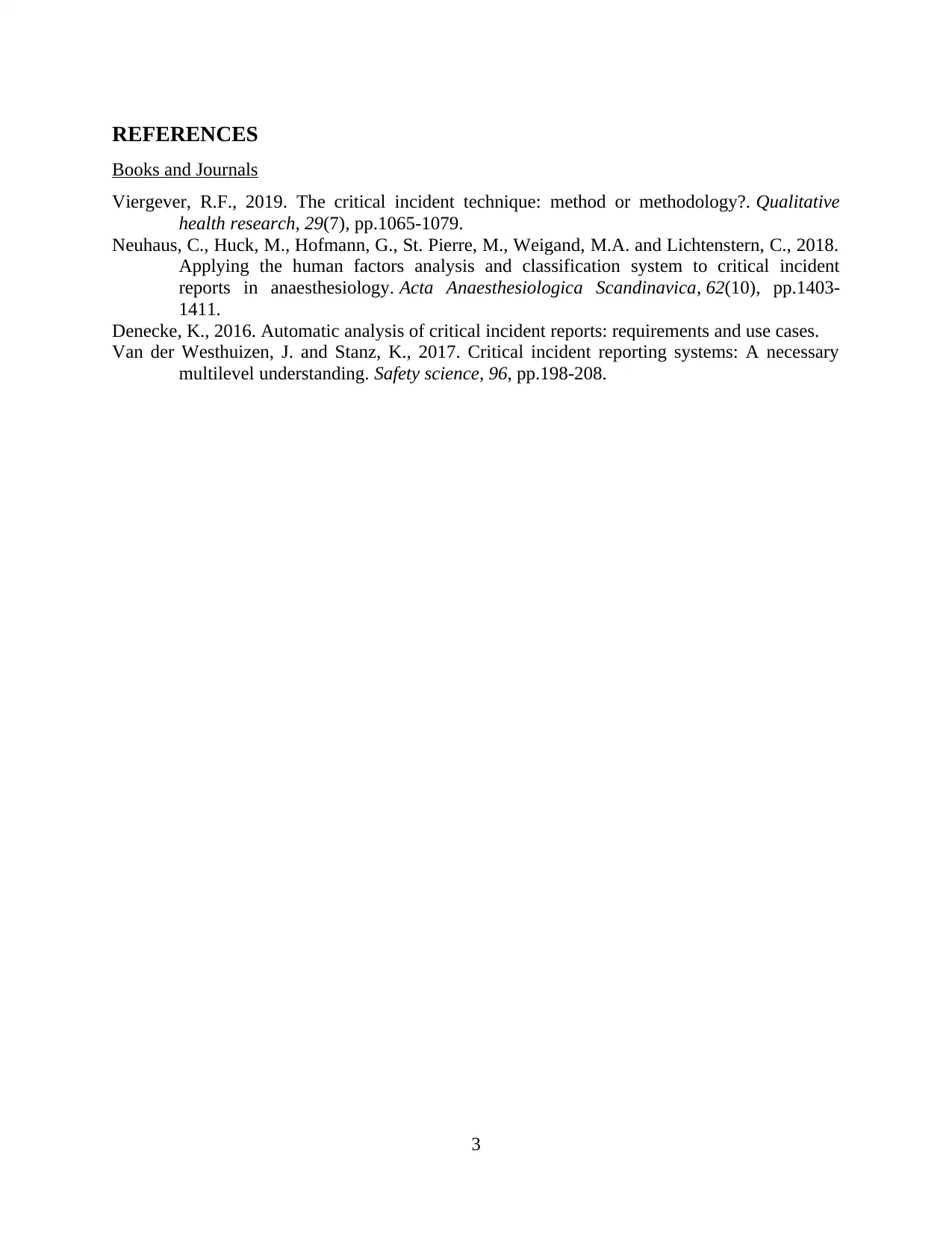Case Study: Analyzing a Critical Incident in Healthcare Settings
VerifiedAdded on 2023/01/05
|4
|617
|31
Case Study
AI Summary
This case study examines a critical incident within a healthcare setting involving a nurse, a senior doctor, and a patient named Sherry. The incident revolves around the doctor's failure to adhere to proper hygiene protocols, specifically not washing his hands before treating Sherry's wound after visiting another patient, and the nurse's inaction in addressing this breach. The case highlights issues of medical negligence, the importance of aseptic techniques, and the significance of patient safety. The analysis delves into the consequences of the doctor's actions, the nurse's failure to report the incident, and the overall impact on patient care. The case underscores the need for adherence to medical protocols, effective communication, and a proactive approach to ensure patient well-being. The case study also references relevant literature on critical incident techniques and analysis.
1 out of 4











![[object Object]](/_next/static/media/star-bottom.7253800d.svg)